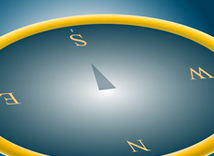The United Nations Development Program (UNDP) has just released its flagship annual Human Development Report. The HDR, as it is known, was devised by a pair of Nobel Prize winning economists in 1990 to as a way to measure countries’ progress beyond using purely economic measures like GNP or GNI. The report collects data on things like literacy, maternal mortality, poverty, adolescent fertility, education levels and many other indices to measure a country’s relative level of human and social progress.
It’s a handy way to keep track of “progress” as it affects everyday people. The big conclusion of the 2013 HDR is that the Global South is rising…and very fast.
From 1990 to 2000 few countries showed huge progress on the HDR scale. Only 3 out of 33 countries emerged from the bottom 25th percentile from 1990 to 2000. Then, once the Millennium Development Goals were launched in 2000, there was a surge of progress over the next decade. From 2000 to 2012 the number of countries scoring in the bottom 25% on the Human Development Index was halved from 30 to 15.
The graph below gives you a sense of where that progress has come from. It compares country’s HDR scores in 1990 to 2012 and every country but two (Zimbabwe and Lesotho) scored better. But what’s most impressive is how 40 countries from the Global South fared dramatically better. The farther left of the horizontal line, the more dramatic the progress.
This all underscores the fact that since 2000 there has been unrelenting progress toward making the world a more just and equitable place. In 1990, 43% of the earth’s population was living in extreme poverty. In 2000 that number dropped to 33%. And in 2010 it plunged further to 21%. If this rate of progress stays steady, extreme poverty will be effectively eliminated by 2030.
It may not seem so at times, but we are living in a transformational era in which entire continents are being lifted out of poverty.

